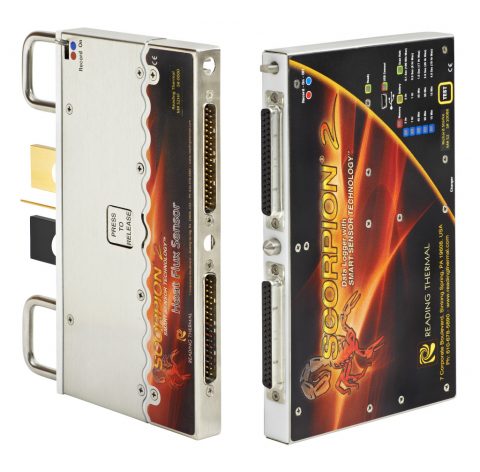Commercial bakeries can explore what is happening inside their industrial ovens and improve their processes and products with the SCORPION® 2 temperature and humidity data logging system.
Reading Thermal, headquartered in Sinking Spring, Pennsylvania, has researched and measured the commercial baking process for more than 25 years. Our heat transfer experts developed the SCORPION® 2 Profiling System and Data Logger, now an industry standard that measures and maps essential baking parameters, such as temperature and humidity, that affect the quality of your products.
Why Humidity Profiling is Important?
Baked products go through three distinct thermal processes:
- The dough is baked after forming to set its structure.
- The product must then be dried to a shelf stable point.
- The product must be adequately cooled before packaging or storage to prevent moisture condensation.
The changes during baking that affect the quality of the final product include time, temperature, and humidity.
- The amount of moisture that remains in a product can affect its shelf life.
- Limiting evaporation can keep the surface of the product moist, allowing it to stretch and preventing cracks.
- Low humidity in a cracker oven can cause blisters that lead to undesirable dark spots and excessive breakage. It may also give the cracker a burnt taste.
- Low humidity in a cookie oven can prevent internal moisture from escaping which can lead to checking (the spontaneous cracking of the cookie after baking).
- High humidity in bread ovens produces the desirable glossy crust seen on many bread products. Steam injection is often used to achieve this type of crust.
- High humidity will help kill pathogens, like salmonella, that can be found in surface toppings.
- Product throughput can also be affected by when and how much moisture builds in a process. Moisture laden environments reduce baking efficiency, thereby reducing product throughput.
Measuring Humidity
The SCORPION® 2 Digital Humidity Sensor is designed to measure the moisture content of the thermal environment in both heating and cooling processes. It is applicable to proofers, tunnel ovens, dryers, and cooling tunnels.
Mechanically, the Digital Humidity Sensor is comprised of an Air Temperature sensor, two inputs for Product Core Temperature Measurement, and a proprietary humidity sampling system to measure Dew Point Temperature, Absolute Humidity and Relative Humidity.
The sampling system contains patent-pending Anti-Saturation Technology™ that allows measurements in high temperature and high dew processes seen in commercial biscuit & cracker and bread & bun ovens.
Measuring Temperature
The Reading Thermal SCORPION® 2 Temperature Sensor Array is connected to the SCORPION® 2 Data Logger and travels through a fully loaded oven with the product, delivering a true representation of temperature from side-to-side and end-to-end. Different types of pluggable sensors are available, including one designed for solid or tight mesh conveyors and one for open mesh conveyors.
Commercial bakeries that utilize the temperature and humidity data logging system from Reading Thermal can take their baking to a whole new level. The SCORPION® 2 Profiling System can help you achieve excellent results. With the appropriate temperature and right amount of humidity, your products will bake efficiently.

